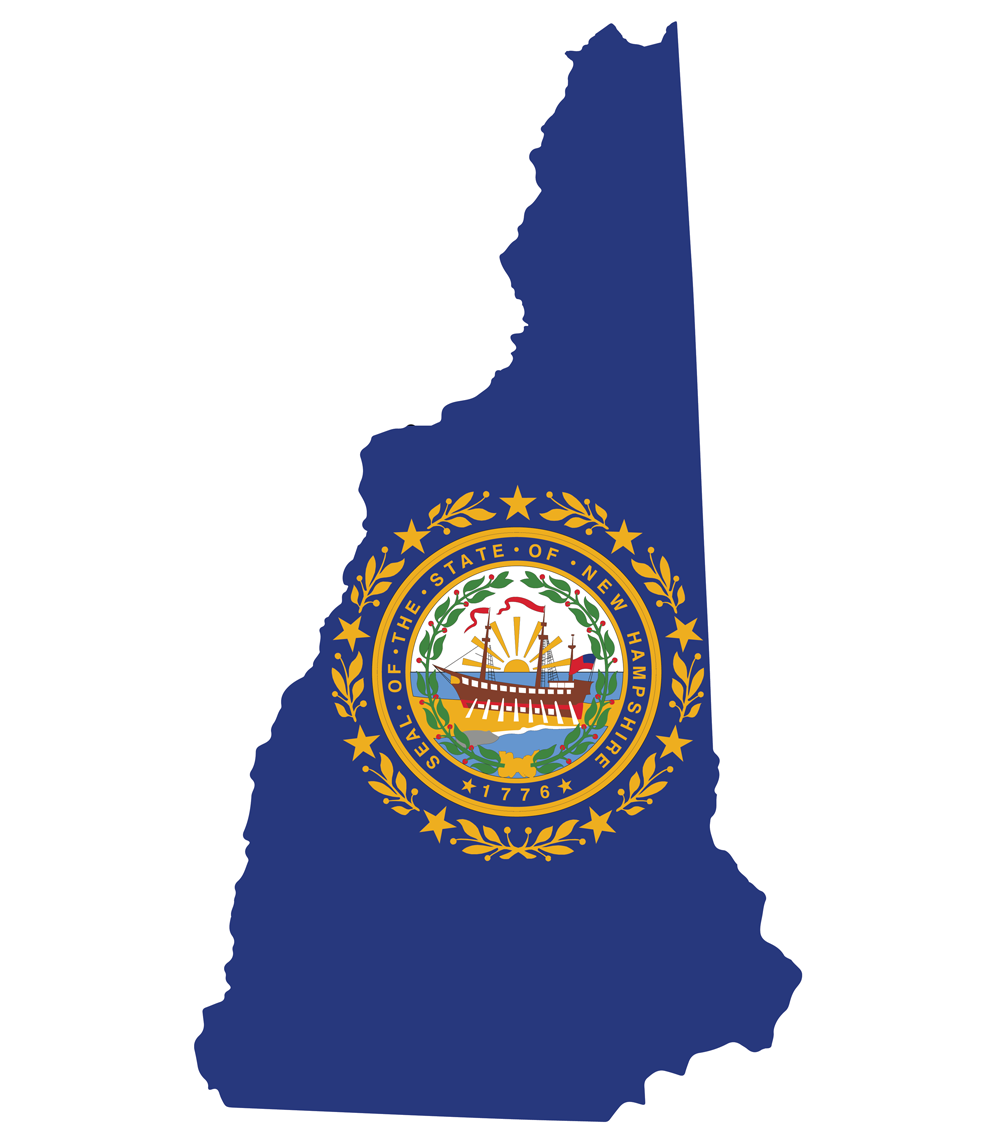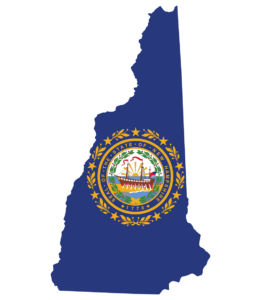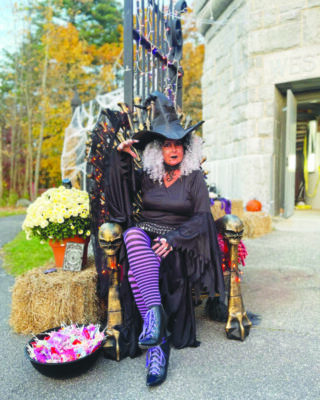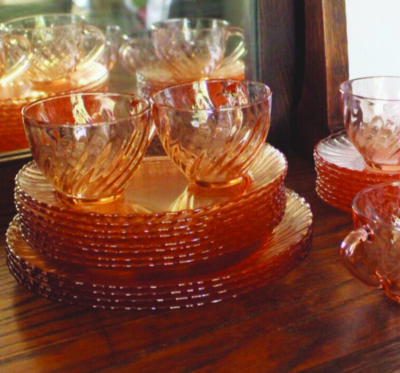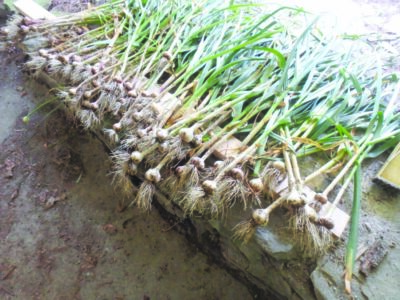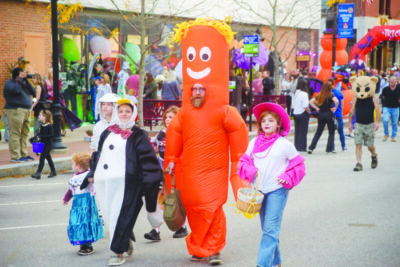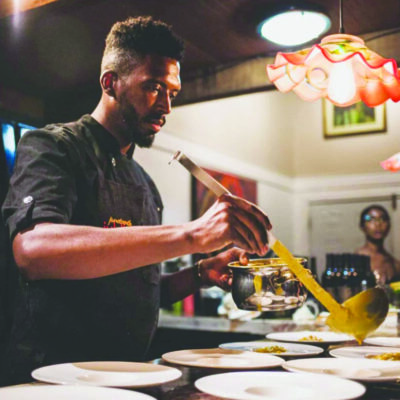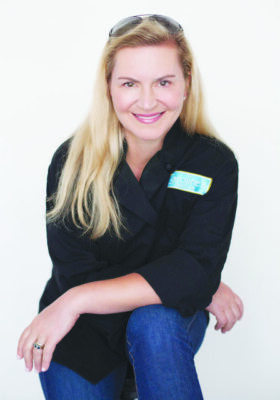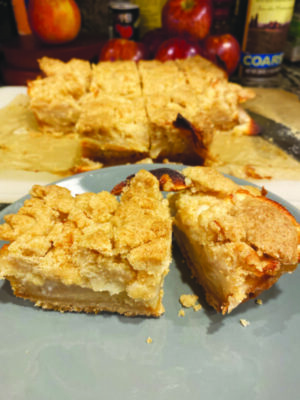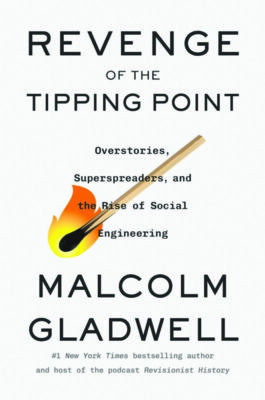Halloween week parties and music events
Next year will be simpler, when Halloween falls on a Friday and every nightspot in the state will offer costume contests. For 2024, though, it’s possible to parlay a wild and costly getup into multiple bashes. For those with kids, they can trick-or-treat without having to worry about when the parents’ Spooktacular event commences.
There’s a bunch to do. Here’s a list.
Friday, Oct. 25
• Atkinson Resort & Country Club (85 Country Club Drive, Atkinson, eventbrite.com) 8 p.m. Devil’s Disco: A 21+ Halloween party. Main Event Entertainment’s DJ Joey Dion spins the hottest tracks. $45.
• Haluwa (45 Gusabel Ave., Nashua, 864-8348) 8:30 p.m. Night Owls play covers, $100 prize for best costume.
• Henry J. Sweeney Post (251 Maple St., Manchester, 623-9145) 8 p.m. Dance with The Raging Rockaholics Band. Costume contest, winners for first, second and third prize. Finger foods provided; members and guests.
• Intervale Country Club (1491 Front St., Manchester, 674-6811) 8 p.m. Eleganza Dance Company hosts its 4th Annual Halloween Spooktacular. DJ Lucia’s plays salsa, bachata, hustle, and cha-cha music. The evening begins with a bachata lesson, followed by social dancing until midnight. Prizes for the best costumes. $20 at the door.
• Jewel (61 Canal St., Manchester, 836-1152) 9 p.m. Hachi Halloween with Reaper, Rebel Scum, Extrakt, Kr3wl b2b Cowson, costumes welcome and contest winner announced at 8 p.m. $30 at posh.vip.
• Makris Lobster & Steak House (354 Sheep Davis Road, Concord, 225-7665) 6:30 p.m. Stray Dogs play classic rock covers and there’s a costume contest
• Puff Cigar Lounge (355 South Broadway, Salem, eventbrite.com) 9 p.m. Hallowhine with favorite dancehall records. Music from Ru, Lu, Styles and Turtle with performances from Nawlage & True’ly Young; hosted by Jakeera. $30.
• Red River Theatres (11 S. Main St., Concord, 224-4600) 10 p.m. Rocky Horror Picture Show is screened. Audience participation is encouraged, but no outside props please. Also Oct. 26 at 10 p.m.
• Red’s Kitchen & Tavern (530 Lafayette Road, Seabrook, 760-0030) 7 p.m. Redemption Band performs, with a costume contest offering $500, $250 and $100 Red’s gift cards as prizes.
• Roberge Center (6 Bridge St., Rochester, facebook.com) 8 p.m. Halloween parade after-party with Pet Semetary: A Ramones Tribute, featuring The Brad Marino Band; donations welcome.
• Rumors Sports Bar & Bowling (22 N. Main St., Newmarket, eventbrite.com) 6:30 and 9:30 p.m. Drag Me To Death Halloween drag show and costume contest with two shows and two casts. $25.
• Shaskeen (909 Elm St., Manchester, 625-0246) 9 p.m. Halloween bash with DJ Myth playing the best in Top 100 and throwbacks, Shawn Caliber on MC duties and prizes for best costumes.
• Stone Church (5 Granite St., Newmarket, 659-7700) 7 p.m. Two-day Grateful Dead party led by Stone Dead, a collaboration of New England musicians with roots and associations going back to the Stone Church scene of the ’80s and ’90s, from acts such as Percy Hill, Groove Child, Thanks to Gravity, Trade and others. $25 in advance, $30 day of show, $45 two-day pass.
• The Bar (2B Burnham Road, Hudson, 943-5250) 8 p.m. Ask Alice plays a Halloween bash with prizes for best costumes. The show is sponsored by Witch City Walking Tours.
• The Brook (319 New Zealand Road, Seabrook, 474-3065) 9 p.m. Guest DJ Sickick spins modern tracks. Prizes for best costume.
Saturday, Oct. 26
• American Legion Post 3 (11 Court St., Nashua, facebook.com) 7 p.m. DJ Bernie D of Perfect Entertainment spins, with prizes, food, dancing and fun.
• American Legion Post 70 (169 Walton Road, Seabrook, facebook.com) 7 p.m. Halloween party with costumes, contests and music from the Ghost Riderz.
• American Legion Post 8 (640 Central Ave. , Dover, 742-9710) 7 p.m. Stiletto, a tribute act dedicated to ’80s hard rock, performs at a 21+ event.
• Auspicious Brew (1 Washington St., Dover, 953-7240) 8 p.m. Halloween kickoff party with Tysk Tysk Task, 2000’s and Regals, $10 at the door.
• Averill House Vineyard (21 Averill Road, Brookline, 244-3165) 6 p.m. Spirit to Spirits – Intuitive Medium Jessica Moseley conducts a group medium reading, offered with a wine tasting. Ticket includes a seat at the reading, calling forward anyone in spirit who would like to communicate with their loved ones in the audience. $45, 21+.
• Black Swan Inn (354 W. Main St., Tilton, eventbrite.com) 7 p.m. Experience the history of spiritualism and a Victorian magic show by magician Michael OJ. Learn about the era’s magic, turn-of-the-century psychics and the ongoing conflict between magicians and spiritualists. Hors d’oeuvres and spirits included. $70.
• The Castle on Charles (19 Charles St., Rochester, facebook.com) 7 p.m. Halloween Latin dance party with cash bar and light snacks. Cocktail hour at 7 p.m., beginner bachata lesson by Anita Augustyniak at 8 p.m. with salsa and bachata dancing from 8:30 until 11 p.m. $20.
• Castleton Banquet and Conference Center (58 Enterprise Drive, Windham, eventbrite.com) 7 p.m. Halloween costume gala, supporting Less Leg More Heart (charity supporting amputees), with dinner, dancing and silent auction. $100 and up.
• Chop Shop (920 Lafayette Road, Seabrook, 760-7706) 8:30 p.m. 15th Birthday Halloween Bash with Casual Gravity and Bulletproof.
• Derryfield (625 Mammoth Road, Manchester, 623-2880) 7 p.m. Mugsy is joined by D-Comp for the Halloween Monster Bash. Come in costume. Prizes for best overall, most creative and honorable mention. $30 at eventbrite.com. 21+ event.
• The Farm Bar & Grille (1181 Elm St., Manchester, facebook.com) 7 p.m. Spooktacular Halloween bash hosted by local rugby club.
• Feathered Friend Brewing (231 Main St., Concord, 715-2347) 5 p.m. Halloween party with Andrew North & The Rangers, all ages, free show.
• High Octane Saloon (102 Watson Road, Laconia, 527-8116) 8 p.m. Mugshot Monday performs at this bash, with costume prizes for sexiest, scariest, best group, funniest, and best overall ($100 for that one).
• Keys Piano Bar (1087 Elm St., Manchester, keysmanch.com) 6 p.m. Witches Brew & Booze Crawl, with a craft cocktail at each stop. Kickoff at Keys Piano Bar (wristband pickup), Wild Rover at 7 p.m., McGarvey’s at 8 p.m., Bad Burger at 9 p.m. and finish at Bar Code at 10 p.m. $15, costume required.
• Liquid Therapy (16 Court St., Nashua, [email protected]) 7 p.m. Souhegan Valley Rotary Club Halloween Party and Karaoke Contest with prizes for best costume and singer, $25.
• Lynn’s 102 Tavern (75 Derry Road, Hudson, 943-7832) 7 p.m. Done By 9, with one member dressed as Monopoly Man, performs, with prizes for best costumes.
• Marker 21 (33 Dockside St., Wolfeboro, facebook.com) 7 p.m. Small Town Stranded will appear in costume as the X-Men, playing an extensive repertoire of cover songs, and there will be a contest for guests too.
• McIntyre Ski Area (50 Chalet Court, Manchester, 622-6159) 7 p.m. Come in costume and join The Morning Buzz at the resort’s Hill Bar & Grille for the Buzz Brews & Boos Halloween Party (21+). $45 at ticketscandy.com, includes appetizer buffet, DJ, Halloween contest, games and prizes.
• Michael’s Bar & Grill (8 Stiles Road, Salem, michaelsmarketllc.com) 6 p.m. Halloween dinner with costume prizes, music videos, trivia. $40.
• MoJo’s West End Tavern (100 Albany St., Portsmouth, facebook.com) 6 p.m. 4th Annual Two Brothers Halloween Party with DJ NBD. Wear a costume to unlock drink specials.
• Newport Opera House (20 Main St., Newport, 863-2412, newportoperahouse.com) will host a 21+ Halloween Masquerade Dance with music by Last Kid Picked, from 8 p.m. to the stroke of midnight. Prizes awarded for best costumes in different categories. Cash bar. Tickets are $25 in advance, and $30 at the door, while they last.
• Mount Washington Cruises (211 Lakeside Ave, Laconia, 366-5531, cruisenh.com) will hold a Halloween Masquerade Cruise from 6 to 9 p.m., leaving from Weirs Beach. This 21+ costumed event will be a three-hour cruise with a buffet dinner, live entertainment, seasonal snacks and a costume contest. Tickets are $72.
• Par28 (23 S. Broadway, Salem, par28.com) 6 p.m. Halloween costume party with DJ, games and gift card for winners.
• Portsmouth Gas Light (64 Market St., Portsmouth, portsmouthnhtickets.com) 8 p.m. Halloween party in the third-floor nightclub with DJ Koko P, $500 prize for best costume, $25.
• Press Room (77 Daniel St., Portsmouth, eventbrite.com) 8:30 p.m. Skunk Sessions Halloween Psychedelic Circus with the Liquid Light Brothers and special guests Justin Lopes (keys), Henley Douglas (sax) and Yahuba Torres (percussion). $20.
• Rockingham Ballroom (22 Ash Swamp Road, Newmarket, portsmouthnhtickets.com) 7 p.m. DJ/KJ Magic spinning funk, groove, R&B, pop tunes and requests. Karaoke after 10 p.m. Costume prizes include cash for best couple. Signature Witch’s Brew drink included with ticket (21+). $15
• Saddle Up Saloon (92 Route 125, Kingston, 347-1313) 8 p.m. All That ’90s plays covers at a decade-themed costume bash.
• Sayde’s (136 Cluff Crossing, Salem, 890-1032) 7 p.m. Big Blue Sky returns to provide the music. Dress-up encouraged but optional; there will be prizes for best costumes.
• Shooters Pub (6 Columbus Ave., Exeter, 772-3856) 6 p.m. Tin Palace plays covers at a Halloween party.
• Village Trestle (25 Main St., Goffstown, 497-8230) 8 p.m. Halloween costume party with Bob Pratte Band. Contest and prizes.
Sunday, Oct. 27
• Rambling House Food & Gathering (57 Factory St., Suite A, Nashua; ramblingtale.com) will host Boos & Brews at 6 p.m. Tickets cost $20. “Join Rambling House & TaleSpinner Brewery for a night filled with frights by the fire. Enjoy an evening of storytelling by raconteur, humorist, and author Simon Brooks,” according to the website.
Monday, Oct. 28
• Jimmy’s Jazz & Blues Club (135 Congress St., Portsmouth, ticketmaster.com) 7 p.m. Scott Brown and the Diplomats perform an elegant Halloween soiree, with multiple costume contest categories. $20.
Wednesday, Oct. 30
• Brickhouse Restaurant and Brewery (241 Union Square, Milford, eventbrite.com) 6:30 p.m. Spooky pumpkin paint night; entry includes one free drink. $45.
• Rex Theatre (23 Amherst St., Manchester, palacetheatre.org) 7 p.m. Jeff Rapsis provides the music at the Lon Chaney Halloween Creepfest double feature, with The Unknown (1927) and West of Zanzibar (1928). $10.
Thursday, Oct. 31
• Alpine Grove Events Center (19 S. Depot Road, Hollis, eventbrite.com) 9 p.m. Halloween singles bash. Come dressed in your costume — prizes for the best ones — and dance to DJ music while enjoying a Halloween vibe. $12–$29.
• Auspicious Brew (1 Washington St., Dover, 953-7240) 8 p.m. Queeraoke with Lezhang Seacoast Halloween costume contest, no cover.
• Bridgewater Inn (367 Mayhew Turnpike, Bridgewater, 744-3518, bridgewater-inn.com) will offer Halloween karaoke on Thursday, Oct. 31, and Friday, Nov. 1, before the big party on Nov. 2
• Chunky’s (707 Huse St., Manchester, chunkys.com) 7 p.m. Halloween viewing party of Harry Potter and The Sorcerer’s Stone, $15.
• Downtown Nashua (eventbrite.com) 5 p.m. Unleash the Night: The Ultimate Halloween Bar Crawl, $14.99 includes two or three drinks or shots (offers may vary).
• Forum Pub (15 Village St., Concord, 565-3100) 7 p.m. Trick-or-treat options for all who show up in costume.
• Keys Piano Bar (1087 Elm St., Manchester, keysmanch.com) 8 p.m. A ghoulishly good time with live music, costume contests ($200 prize) and wickedly delicious drink specials that will keep you in high spirits all night long.
• LaBelle Winery ( 345 Route 101, Amherst, 672-9898) 6:30 p.m. Spooktacular Halloween party with DJ from Get Down Tonight Entertainment spinning Halloween tunes. Enjoy appetizers, snacks and desserts included in your event ticket, and a full cash bar will be available all night. A special prize will be awarded for the best Halloween costume. $47.
• Porkbarrel Productions (1324 Lovell Lake Road, Wakefield, eventbrite.com) 6 p.m. Backyard Boulderdash with The Boneheads and the Wooden Nickels. Come dressed in costume — grand prize of $300 and runner-up wins $100, as judged by the headliners. $15.
• Press Room (77 Daniel St., Portsmouth, eventbrite.com) 9 p.m. Dan Blakeslee’s alter ego Doctor Gasp performs with his band the Eeks. The 21st Annual Halloween Special with support from Soul Church begins directly after the Portsmouth Halloween parade. $15.
• Stone Church (5 Granite St., Newmarket, 659-7700) 7 p.m. Jimkata is a nationally touring electro-rock band blending heavy beats, hooks built on synth-pop sensibilities, and big anthemic guitars to create music with both modern and timeless appeal that combine the organic and the electronic. P(x3), a Connecticut duo, opens. $15.
• Stoned Wall Bar & Grill (37 Manchester St., Manchester, 698-2049) 8 p.m. Halloween party with drink specials and full menu, 50/50 raffle, bag raffles (six bags with values of $10-$5), costume contests. Best costume voted by customers, most original, colorful/pride filled, scariest, best clown and kinkiest.
• The Big House (322 Lakeside Ave., Laconia, 767-2226) 6 p.m. Luke SkyRocker Karaoke’s 7th annual Halloween party with costume contest. 21+.
• The Rugged Axe (1887 S. Willow St., Manchester, 232-7936) 2 p.m. Axe throwing Halloween party runs from 2 to 10 p.m., with costumes strongly encouraged, drinks specials and a raffle. Reservation at theruggedaxe.com.
• Wally’s Pub (144 Ashworth Ave., Hampton, ticketmaster.com) 9 p.m. 12/OC Halloween Hoedown with Nate Ramos Band and Michael Corleto, $30.
Friday, Nov. 1
• Saddle Up Saloon (92 Route 125, Kingston, 347-1313) 8 p.m. Bite the Bullet plays covers, with prizes for the best costumes in various categories.
Saturday, Nov. 2
• Bridgewater Inn (367 Mayhew Turnpike, Bridgewater, 744-3518) 8 p.m. Halloween karaoke and costume contest.
• To Share Brewing (720 Union St., Manchester, 836-6947) 7 p.m. Queen City Improv will be performing a Halloween-inspired show. $5 at the door (cash or card) gets you in. Doors open at 6:30 p.m. Costumes are highly encouraged.
• Wally’s Pub (144 Ashworth Ave., Hampton, 926-6954) 6 p.m. Prospect Hill’s 15th annual Halloween party also celebrates their new EP, Catalyst. Anaria, Red Crown and Chris Drake provide support. $25.
Featured photo: West of Zanzibar.


